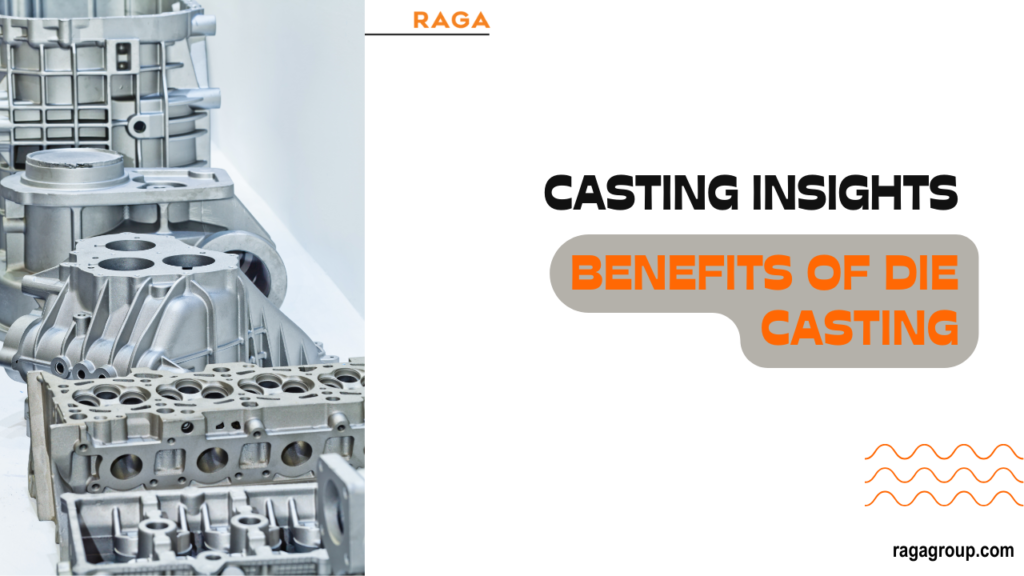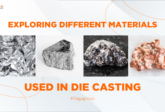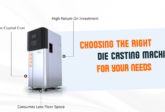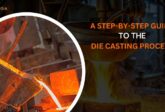Exploring Die Casting Technologies: Processes, Materials, and Future Trends
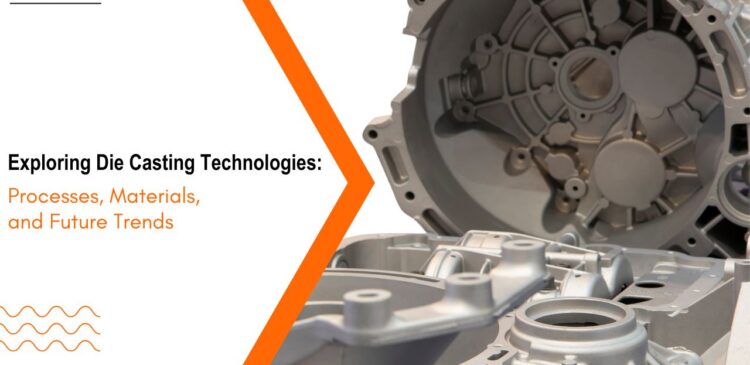
Die casting is an integral part of modern manufacturing, enabling high-volume production of precise, durable parts essential for industries like automotive, aerospace, and consumer electronics. With its roots in the late 19th century, die casting technologies have continually evolved, revolutionising production speed and efficiency while delivering superior-quality metal components. In this blog, we explore various die casting processes, materials used, and the exciting trends shaping the future of die casting technologies.
What is Die Casting?
Die casting is a manufacturing process where molten metal is injected into a mould cavity under high pressure, allowing for mass production of intricately shaped metal parts. The process has roots dating back to the 1830s when it was initially developed for printing purposes. Since then, die casting has evolved significantly, with advancements in materials, techniques, and machinery driving increased efficiency and wider applications.
Types of Die Casting Processes
Several die casting processes exist, each for specific needs and applications:
- High-Pressure Die Casting (HPDC): Known for speed and precision, HPDC injects molten metal into the mould at high pressure, resulting in complex and accurate parts suitable for industries requiring tight tolerances.
- Low-Pressure Die Casting (LPDC): LPDC is often used for parts that need more uniform mechanical properties, such as automotive wheels. It applies lower pressure, reducing potential porosity in the casting.
- Gravity Die Casting: Using the force of gravity rather than pressure, this method is ideal for producing larger, structurally sound components, commonly in aluminium and zinc.
Materials Used in Die Casting
The choice of material plays a crucial role in die casting, as each metal offers unique properties suited to specific applications.
- Aluminium: Lightweight, strong, and corrosion-resistant, aluminium is popular for automotive and aerospace applications where strength and weight are critical.
- Zinc: Known for its high strength and ductility, zinc is frequently used for smaller, precision parts like electronic components and automotive parts.
- Magnesium: The lightest structural metal, magnesium is valued in the electronics and automotive industries for applications where weight reduction is essential.
The Die Casting Process
Die casting involves several carefully controlled steps:
- Mould Creation: Precision moulds, often made of hardened steel, are designed to shape the molten metal accurately.
- Injection of Molten Metal: Metal is heated to a liquid state and injected into the mould cavity.
- Cooling and Solidification: The mould cools, allowing the metal to solidify and take on the mould’s shape.
- Ejection of the Part: Once solidified, the part is ejected from the mould and undergoes finishing processes as needed.
Advantages of Die Casting
Die casting technologies offer several benefits, making them indispensable in modern manufacturing:
- High Efficiency and Speed: Die casting produces components quickly, enabling mass production.
- Excellent Dimensional Accuracy: The high precision achieved in die casting makes it suitable for complex designs.
- Cost-Effectiveness: While initial mould costs can be high, die casting is economical for large production runs.
- Strong and Durable Parts: Die-cast components are robust and capable of withstanding challenging environments.
Applications of Die Casting
Die casting is fundamental to numerous industries, producing parts with superior structural integrity and precise details.
- Automotive Industry: Die casting is essential for producing engine blocks, transmission housings, and other structural parts.
- Consumer Electronics: Components for smartphones, laptops, and other electronics rely on die-cast metal parts for durability and lightweight construction.
- Aerospace and Defence: Aircraft and defence equipment require parts that balance strength and weight, making die casting ideal for components used in these sectors.
Challenges and Considerations
Despite its advantages, die casting technologies come with challenges:
- Initial Cost of Moulds: The upfront investment for mould creation is high, although it pays off over large production runs.
- Part Size and Complexity Limitations: Extremely large or complex parts may be challenging or cost-prohibitive to produce via die casting.
- Quality Control: Maintaining quality and managing potential defects, such as porosity, requires stringent control measures and regular inspection.
Future Trends in Die Casting Technologies
The future of die casting technologies is shaped by advancements and trends that promise greater efficiency, sustainability, and precision.
- Innovations and Advancements: Modern alloys, improved machinery, and automation are pushing the boundaries of what die casting can achieve.
- Sustainable Practices and Materials: Eco-friendly practices, like recycling materials and reducing emissions, are gaining traction in die casting, aligning with broader industry sustainability goals.
- Impact of Industry 4.0: Smart factories, IoT-enabled equipment, and data-driven quality control are enhancing the die casting process, increasing efficiency and reducing waste.
Conclusion
Die casting technologies are pivotal to today’s manufacturing landscape, enabling the efficient production of high-quality metal parts across industries. As we look to the future, innovations in materials, sustainability efforts, and Industry 4.0 are poised to further elevate the capabilities of die casting. Embracing these advancements will ensure die casting continues to meet the evolving demands of modern manufacturing.
Frequently Asked Questions (FAQs)
What is die casting, and how does it work?
Die casting is a process in which molten metal is injected into a mould cavity under high pressure, creating parts with precise shapes and high strength.
What are the main types of die casting processes?
The primary types are high-pressure die casting, low-pressure die casting, and gravity die casting, each with unique applications and benefits.
Which materials are commonly used in die casting?
Common materials include aluminium, zinc, and magnesium, chosen for their strength, lightweight, and resistance to corrosion.
What are the advantages of using die casting in manufacturing?
Die casting offers efficiency, accuracy, cost-effectiveness for high-volume runs, and the production of durable parts.
What are some common applications of die casting?
Die casting is widely used in the automotive, electronics, aerospace, and other industries where complex and precise parts are required.
Embracing modern advancements and sustainable practices, die casting technologies will remain at the heart of high-quality manufacturing for years to come.

